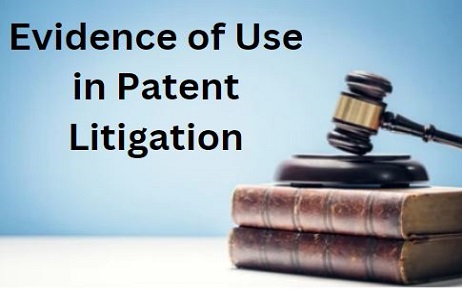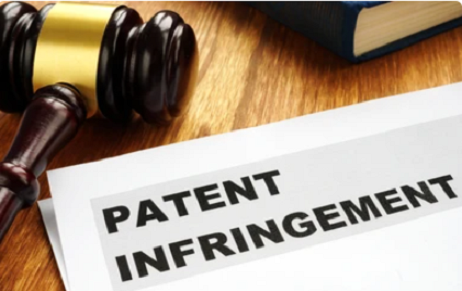All over the world today businesses strive for growth by maintaining a competitive edge in…
Due Diligence Search Strategies…2
This article is in continuation with the blog “Due Diligence Search Strategies for Determining Patentability of Exemplary Indian Patent Applications” by IIPRD (Please click here to read the blog), an initiative from IIPRD to randomly pick up recently published Indian patent application and try and understand the chances of getting a valid patent. IIPRD made note of an Indian Patent Application, which has been recently been published in the Indian Patent Journal relating to methods and systems for selecting a mobility anchor point for a mobile node in a network.
In summary, the patent discloses, a Multi-node (MN) that connects to an access point for performing communication. The communication may be performed by transmitting and receiving messages between the access point and the mobile device. When the MN moves out of the coverage area of an access point, then a handoff process occurs. During the handoff process, the MN tries to select another possible access point, according to the present invention, by determining the speed of the mobile node in the network and by determining a domain of migration of the mobile node.
The Applicant is intended to claim the following:
1. A method for selecting a mobility anchor point for a mobile node in a network, the method comprising: determining the speed of the mobile node in the network; determining a domain of migration of the mobile node, and selecting the mobility anchor point based on the speed and the domain of migration.
Based on quick due diligence, IIPRD identified few prior arts that can be considered material for invalidation on the present patent application. The prior arts include:
- Mobility Anchor point selection based on user mobility in HMIPv6 integrated with fast handover mechanism – Published on 17 March 2005
- Performance comparison of mobility anchor point selection schemes in Hierarchical Mobile IPv6 networks – Published on 07 October 2005.
- History-based Auxiliary Mobility Management Strategy for Hierarchical Mobile IPv6 networks – Published on 07 July 2005.
Discussing further, part of claim mapping is cited below for the first prior art.
| Claim 1 of Patent Application | Cited Portions of Prior art(Non-Patent Literature 1 by E. Natalizio et al) |
| A method for selecting a mobility anchor point for a mobile node in a network, the method comprising: | In the context of Hierarchical Mobile IPv6 integrated with Fast Handover mechanism, this paper proposes two Mobility Anchor Point (MAP) selection algorithms, both based on the classification of users depending on their mobility (Abstract) |
| determining the speed of the mobile node in the network; | Furthermore, reference [8] foresees the use of the mobile user speed combined with the preference field of the MAP as input for MAP selection. The algorithms presented in this work follow this specification, classifying users depending on their “mobility” (Page 3, Map Selection Algorithms). |
| determining a domain of migration of the mobile node; | To avoid this situation FHMIP-NH considers a direct effect of users’ high mobility: the time needed to perform a certain number of handovers (from this the suffix NH). The shorter this time, the higher the estimated user’s mobility, and, consequently, the higher the hierarchy level to be assigned to the MN. The values of the time thresholds are in Table II and the procedure to calculate them is described in the previous section. (page 4, FHMIP-NH) |
| and selecting the mobility anchor point based on the speed and the domain of migration. | Reference [8] suggests a distance-based method of MAP selection, where a mobile node may choose to register with the furthest MAP to avoid frequent re-registrations. Furthermore, reference [8] foresees the use of the mobile user speed combined with the preference field of the MAP as input for MAP selection. The algorithms presented in this work follow this specification, classifying users depending on their “mobility”. (Page 3, Map Selection Algorithms). |
It is further to be noted that there are many valid grounds to reject a patent under section 25 of the Indian Patents act, 1970. Few Important grounds are stated here:
Important Grounds under Opposition to grant of patent:
Section 25 (1) Where an application for a patent has been published but a patent has not been granted, any person may, in writing, represent by way of opposition to the Controller against the grant of a patent on the ground –
(b) that the invention so far as claimed in any claim of the complete specification has been published before the priority date of the claim–
(i) in any specification filed in pursuance of an application for a patent made in India on or after the 1st day of January 1912; or
(ii) in India or elsewhere, in any other document; provided that the ground specified in sub-clause (ii) shall not be available where such publication does not constitute an anticipation of the invention by virtue of sub-section (2) or sub-Section(3) of Section 29;
(e) that the invention so far as claimed in any claim of the complete specification is obvious and clearly does not involve any inventive step, having regard to the matter published as mentioned in clause (b) or having regard to what was used in India before the priority date of the applicant’s claim;
Pre-grant Opposition under Section 25(1) (b) (i) and under Section 25 (1) (e) under the grounds that the patent publication in light of the above-cited prior art(s) can be rendered non-novel/obvious and hence non-patentable.
We believe that it is the right time to conduct comprehensive due diligence to understand the type of patents being filed currently by Indian and International Corporates, analyze the scope of protection that might be accorded from a functional and structure/construction perspective, and also assess the manner in which they might later impact the products/services being launched by Corporates and especially start-ups in the same domain.
Please note that the above analysis and the opinion presented are solely performed by IIPRD professionals and the views are solely their own and not be relied upon and intended to be legal advice about particular problems and. Corporates who are interested in filing pre-grant oppositions are advised to carry out further due diligence for the same. For any comments or queries, please mail us to [email protected].
Author – Veera Raghavan Rajendran,
Patent Specialist, IIPRD.
The Author of the Blog can be reached: [email protected].


